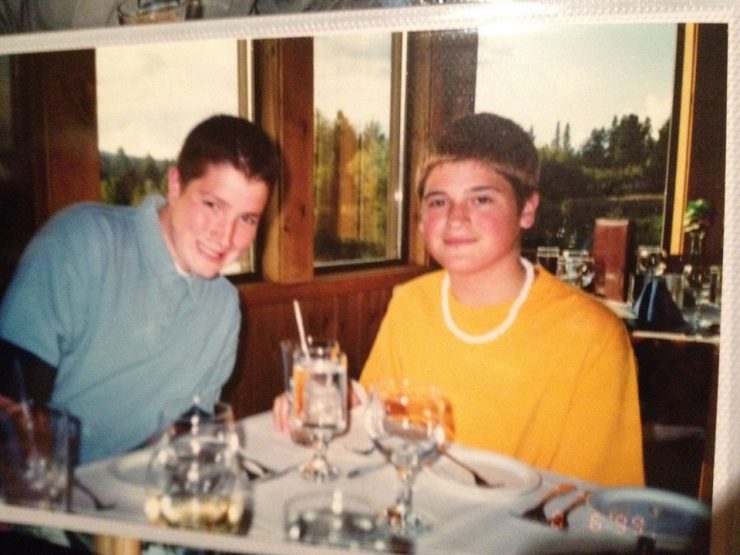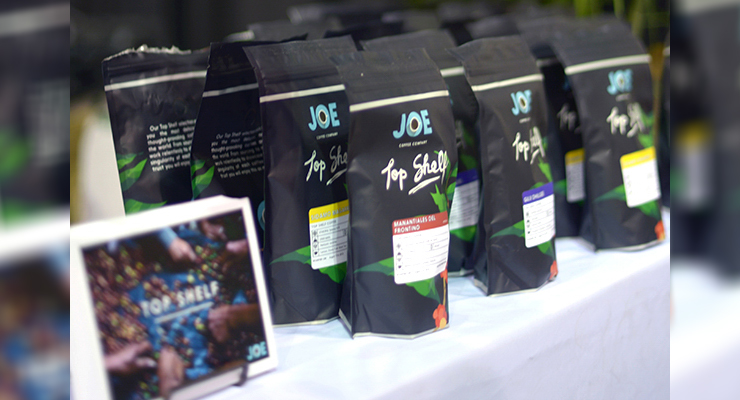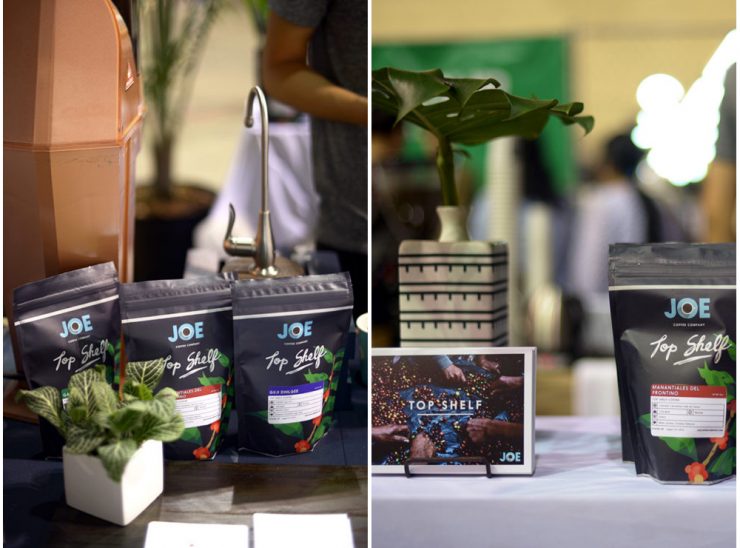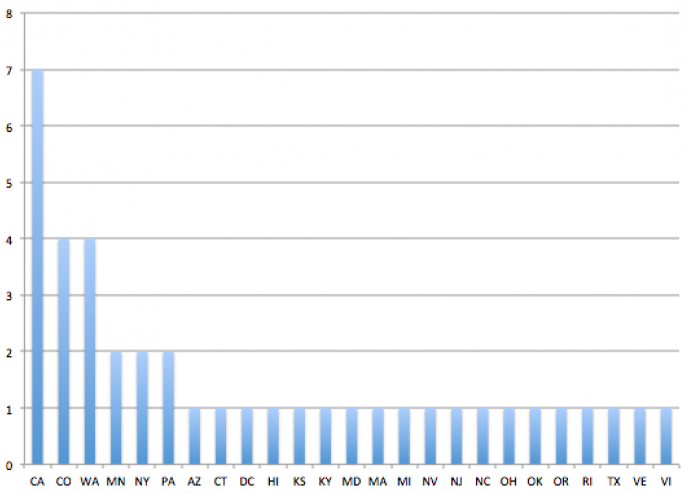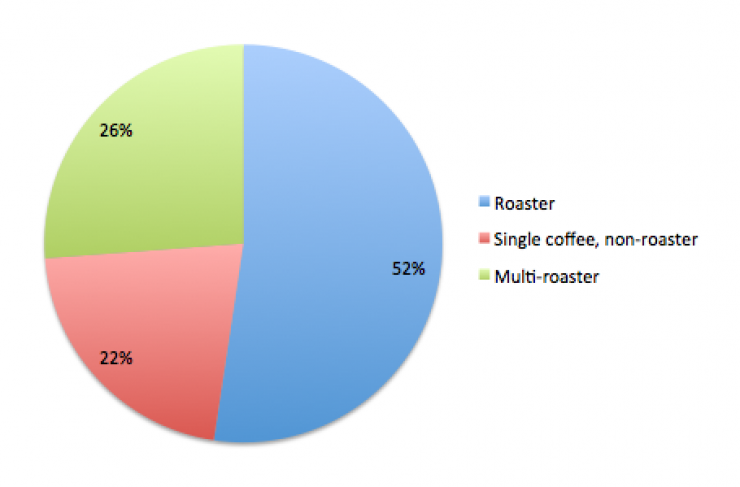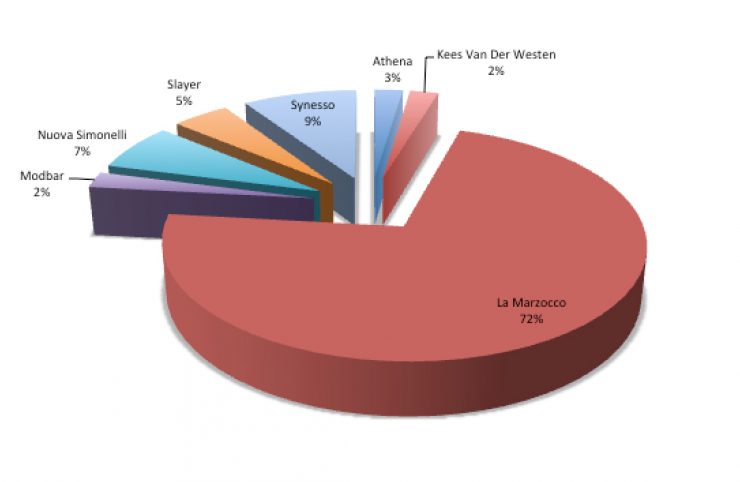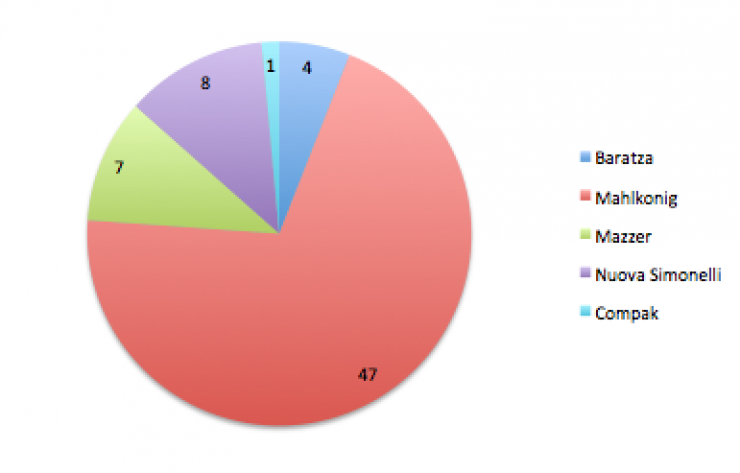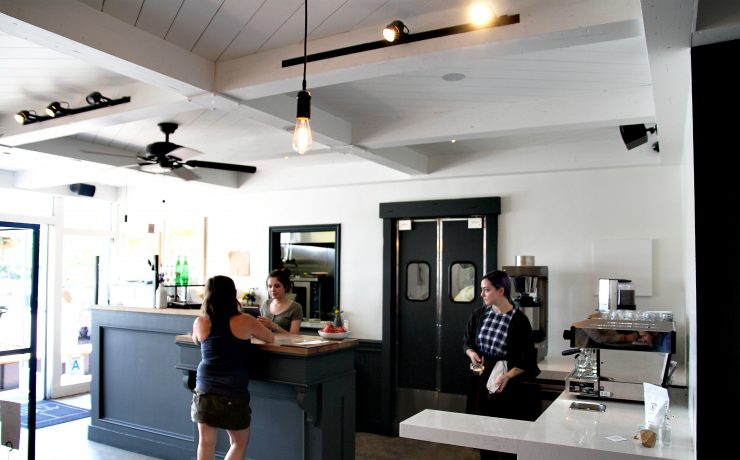Chalo Fernandez quiere saber cómo tú disfrutas tu cold brew en un día caluroso de verano. Un productor de quinta generación, quien convirtió la finca de su familia en un modelo sostenible y en una colaboración desde el cultivo hasta la taza, él viaja frecuentemente entre Colombia y Canadá. A veces ve sus cafés en algunas tiendas café.
Sin embargo, no ha contado con la suerte de conocer en dónde termina su café. El comercio directo cierra la brecha entre el productor y el consumidor, incrementando la interacción entre las dos partes. De esta forma puede rastrear desde sus granos de café hasta las botellas de cold brew que ocupan las estanterías en Canadá hoy en día.

Chalo’s farm cold brew para la venta en Canadá. Crédito: Chalo’s Coffee
Una Oportunidad para un Mejor Café
Por más de 110 años, la familia de Chalo ha trabajado en la misma tierra. Durante los tiempos difíciles cuando la comercialización de café estaba causando más daños que ingresos, su abuelo dejó el café y comenzó a sembrar caña de azúcar. Sin embargo, hace seis años, Chalo, su hermano, dos primos y su cuñado vieron una oportunidad y compraron la finca de su abuelo.

El hijo de Chalo y su padre seleccionando los granos de café. Crédito: Chalo’s Coffee
El incremento de la demanda por cafés de origen fue la oportunidad que dejó la tercera ola del café. Chalo y su familia estaban orgullosos de producir el café de calidad que tanto deseamos, el cual habían comenzado a sembrar desde cero.
En el año 2013, fue su primera cosecha. Este fue el comienzo de las alianzas que ahora se convirtieron en una amistad y en un movimiento comunitario que comenzó a crecer, solo, a través de boca en boca y las redes sociales.

La cuenta de Instagram de Chalo permite que sus seguidores vean el proceso y comercialización de su café. Crédito: Chalos Coffee
Como Comienzan las Conecciones de Comercio Directo
La Federación Nacional de Cafeteros (Fedecafé), constituida en el año 1927, representa más de 500.000 familias productoras de café en Colombia. Ofrece conveniencia y transparencia a sus miembros, a quienes les pueden vender su café directamente. También a través de la búsqueda de otros socios comerciales le permite aumentar las aspiraciones del productor.
Para Chalo y su familia, esta aspiración proviene de experimentar el café de especialidad en Australia y Canadá. Esto los motivó a llevar su café al mismo nivel, así que comenzaron a vender ellos mismos a otro tipo de consumidores. Actualmente, Chalo vende una parte de su café a través de comercio directo y el resto lo vende a Fedecafé. Aún así espera que muy pronto pueda vender exclusivamente a través de comercio directo.
Chalo y su esposa Diana (quien es canadiense) comenzaron a hacer llamadas telefónicas y a visitar tostadores para compartir su café y su historia. No escogieron cualquier tostador, ellos decidieron elegirlos y buscaban a los que compartían su devoción por el café y la sostenibilidad.
Hacer las Conexiones Adecuadas
Una de sus llamadas llevó a Chalo y Diana a conocer a Tim Trebilcock, un tostador de café cerca de Toronto, Canadá.
“En el momento en que cruzó la puerta, ya éramos amigos” dice Tim, él estaba tan encantado con la familia de Chalo, su historia y desde luego el café, que luego comenzó a presentarlos con otros tostadores y cafés cercanos. Quienes con el paso del tiempo también comenzaron a comprar su café.
Tim, junto con su hermano y su padre, comenzaron a tostar el café en su cocina hace una década. Hoy en día tienen una planta de operación la cual envía café en todo Canadá y otras partes. Sus relaciones como la que entablaron con Chalo y su familia, es lo que lo motivan hoy en día. “Poder compartir una cena en sus casas, es allí de donde proviene la pasión”, dice. “Este negocio es acerca de las personas.”
Chalo también conoció por vía telefónica a Alfonso Tupaz, CEO de Hatch Coffee. En ese entonces, Hatch Coffee estaba terminando de construir su empresa de cold brew. Luego de reunirse con Chalo y de poder probar su café, decidieron que fuera parte de los otro de los productores socios con los que trabajan.
Hatch Coffee toma medidas que aseguren que su cold brew alcance su más alto potencial: tostar baches pequeños, periodos de maduración óptimos de acuerdo con el tipo de café, molienda exacta, extracción de baches pequeños y a temperaturas controladas por tiempos extendidos y para finalizar, doble filtración antes de embotellar. Ellos son el tipo de tostadores dedicados con los que Chalo quiere hacer negocios.
 Tim Trebilcock (el de la derecha) y otro tostador en su visita de campo a la finca de Chalo. Crédito: Chalo’s Coffee
Tim Trebilcock (el de la derecha) y otro tostador en su visita de campo a la finca de Chalo. Crédito: Chalo’s Coffee
El Comercio Directo es una Vía de Doble Sentido
Chalo y Diana creen en poder ser innovadores y amigables con el medioambiente. Ellos manejan el único beneficiado húmedo de la región, el cual dejan usar a los demás caficultores y se han empoderado con equipos y recursos sostenibles. Su dedicación al entorno y a la comunidad es posible gracias al comercio directo; y también es algo que, como recompensa, ha permitido que los tostadores escojan Chalo’s Coffee.
Para Alfonzo Tupaz, el comercio directo es más acerca de tener una sociedad que una operación comercial. Las prácticas que ha logrado adaptar a través de sus experiencias, también se han aplicado en la finca de Chalo. Y en una última visita, él junto a otros tostadores comenzaron a planificar con Chalo formas de ayudarlo a optimizar sus operaciones. Al compartir conocimiento, ellos mejoran la comercialización en cada parte del proceso.
Tim Trevilcock, por ejemplo, tiene una formación en mecánica que también ayuda a Chalo con los planes de mantenimiento preventivos. Durante las visitas, ofrece talleres acerca de los equipos y mantenimiento para Chalo y las fincas vecinas. El llevó refractómetros y medidores de humedad, para medir el nivel de azúcar de las cerezas de café y así determinar su maduración y para asegurarse de que los granos no estén demasiado secos o húmedos.

Alberto, el padre de Chalo midiendo el nivel de azúcar en las cerezas de café con un refractómetro. Crédito: Chalo’s Coffee
¿Qué más pasa en la finca de Chalo? Ver la reacción de su equipo al poder probar los productos que se hicieron con el café que ellos cosecharon.
“Es importante recordar que la mayoría de nosotros somos productores de café y no consumidores, sabemos cómo sembrar café pero no como prepararlo y tomarlo”, explica Chalo.
Cuando prueban el Cold brew de Hatch Coffee (en especial el que dice “ Chalo’s Farm”), su equipo no podía creer que estaban tomando café frío, y el delicioso sabor que tenía. También fue una gran sorpresa el hecho de que 5 Paddles Brewing utiliza el café de Chalo para producir cerveza en Canadá.

El equipo de Chalo probando la cerveza de café en Colombia. Crédito: Chalo’s Coffee
Durante otra visita, Tim Trebilcock llevó café que había sido tostado un sábado para poderlos probar en la finca el lunes. Las reacciones del equipo de Chalo y de otros caficultores locales los hizo llorar.
El Comercio Directo tiene sus Propios Retos
Gracias al comercio directo, los productores pueden vender su café por mucho más de lo que pueden venderlo en el mercado convencional. Sin embargo, con este tipo de logros también vienen las dificultades.
Chalo y los demás productores como él, se responsabilizan de enviar el café a los tostadores sin el apoyo de la federación o de un importador de café profesional. Entablar las relaciones con los tostadores no es fácil.
Además, la logística es otro reto, el primer envío de Chalo a Canadá pasó por los Estados Unidos y tuvo que pasar por la aduana de allí, un proceso costoso y de mucho tiempo, especialmente cuando se terminan pagando tarifas por demora.
Para contrarrestar cualquier tipo de dificultad, Chalo empaca su café en bolsas GrainPro para que la humedad no afecte la calidad de los granos. También han logrado mejorar considerablemente la logística de sus procedimientos logísticos desde que restauraron la finca. Aunque fue una lección costosa de aprender.

Chalo muestra con orgullo su primer envío de café a Canadá. Crédito: Chalo’s Coffee
La madre naturaleza también puede causar dificultades. Debido a que la humedad es el factor principal en la siembra de café, la sequía y humedad alta puede afectar en gran medida el crecimiento de las cerezas de un árbol. La finca de Chalo es de 25 hectáreas, una hectárea es aproximadamente el tamaño de una cancha de futbol y contiene 5.000 árboles. En un buen año, cada árbol produce cerca de un kilo de café.
Pero Chalo y su familia aún le falta para llegar a la producción máxima. La nueva finca aún está joven y Chalo con su positivismo, motiva a su equipo y trabaja fuerte para lograr dicha producción.

Chalo (derecha) con un productor compañero. Crédito: Chalo’s Coffee
Con el apoyo de los tostadores como Alfonso y Tim, Chalo y su familia continúan perfeccionando sus prácticas y aumentando sus equipos de producción. Esto les permite seguir produciendo excelente café que impulsa tanto su finca como la región. Y a medida de que hagan mejoras y trabajen por sus relaciones a largo plazo con los tostadores, también incrementan sus exportaciones las cuales nos brindan un mejor café a nosotros los consumidores.
No es sencillo, pero el progreso es visible, y como dice Chalo, “Estamos dedicados a producir la taza perfecta, esta es una meta de por vida.”
Escrito por D. Kilbride, un agradecimiento a Chalo, Tim Trebilock y alfonso Tupaz de Hatch Coffee. Para información adicional y para contribuir con la finca de Chalo y su comunidad, contacta a Chalo directamente.
Traducido Angie Molina y Editado por Karla Ly
Hatch Coffee es patrocinador de Perfect Daily Grind. Esta entrevista se realizó de acuerdo con nuestras políticas editoriales, y Hatch Coffee no tiene mayor influencia sobre los otros entrevistados en la versión final.
PDG en Espanol
from RSSMix.com Mix ID 8200593 http://www.perfectdailygrind.com/2016/09/entrevista-con-el-productor-el-comercio-directo-es-una-via-de-doble-sentido/
